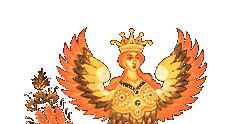The most important feast of the Russian Orthodox church calendar is Easter. It is celebrated with the exchanging of eggs and three kisses. The Faberge eggs began in 1884 with an Easter egg made for the czar that became a gift for his wife, Czarina Maria. The egg reminded the empress of her homeland, and so from then on it was agreed that Faberge would make an Easter egg each year for Maria. Faberge designed Easter eggs for another eleven years until Alexander III died. Then Nicholas II, Alexander's son, continued the tradition. It was agreed that the Easter gift would always have an egg shape and would hold a surprise. These projects became top priority of the company and were planned and worked on far in advance--a year or longer. The surprise was always kept secret.
The designs for the Imperial eggs were inspired by historical art works that Faberge imitated or copied from his travels or from the Hermitage. However, there is a poignant representation of what is now Russian history in the design of a number of these eggs. There were eggs to commemorate the coronation of Czar Nicholas II, the completion of the Trans Siberian Railway, and anniversaries. There were eggs depicting the Imperial yacht-Standart, the Uspensky Cathedral, the Gatchina Palace, and during the time of war, the Red Cross and the military.
Faberge's primary source of inspiration came from works of previous centuries. Translucent enameling was a valued technique in the nineteenth century that required several coats of applied enamel and the "firing" of the object in an oven after each coat. However, only a small number of colors were used in the nineteenth century, and so Faberge took it upon himself to experiment and soon came up with over 140 shades. The most prized of these was oyster enamel which varied in color depending on the light.
Materials used by Faberge included metals - silver, gold, copper, nickel, palladium - that were combined in varying proportions to produce different colors. Another technique used by eighteenth century French goldsmiths and again Faberge involve a simple tinting of the completed work using stones and enamel.
Another technique used by Faberge included guilloche, a surface treatment that could make waves and striations in the design and could be done by machine or by hand. Faberge used natural stones often found in abundance in the area. These included jasper, bowenite, rhodonite, rock crystal, agate, aventurine quartz, lapis lazuli, and jade (nephrite mostly although he would sometimes use jadeite). Precious stones including sapphires, rubies and emeralds were used only for decoration, and when used they were en cabochon (round cut). Diamonds were typically rose-cut. Semi-precious stones including moonstones, garnets, olivines, and Mecca stones were used more often en cabochon.
Fifty six Imperial eggs were made, forty-four of which have been located today and another two that are known to have been photographed. Another twelve Easter eggs were commissioned by Alexander Ferdinandovich Kelch, a Siberean gold mine owner. However, the Imperial Easter egg collection commissioned by the last of the Russian Czars is the most celebrated.
The source of this information is The Faberge Experience Website, that holds a wealth of information on the art and some great links as well.
|



